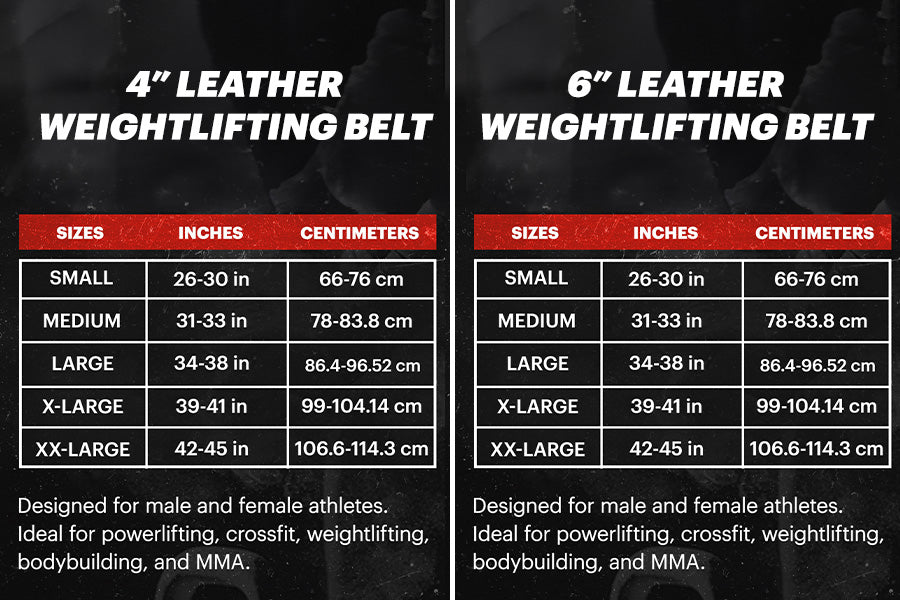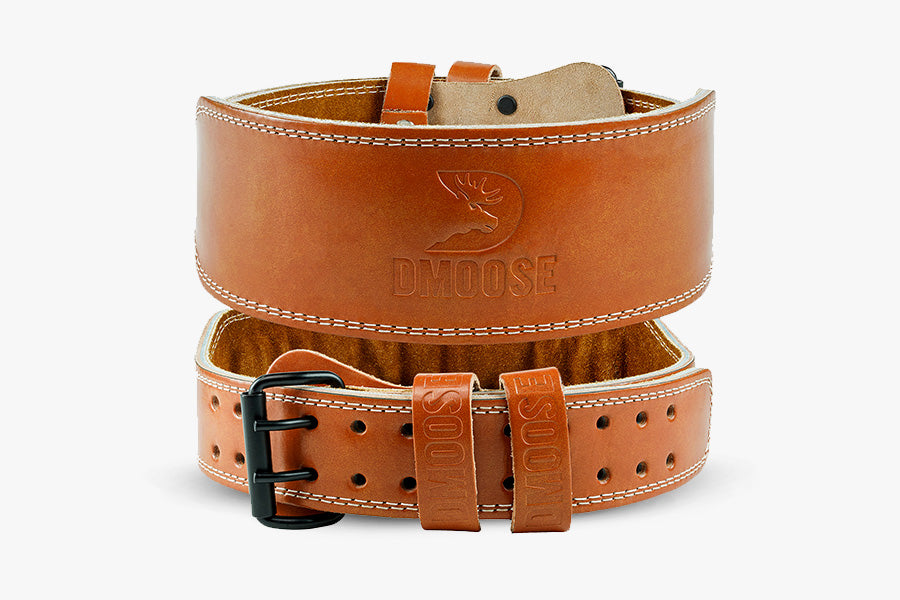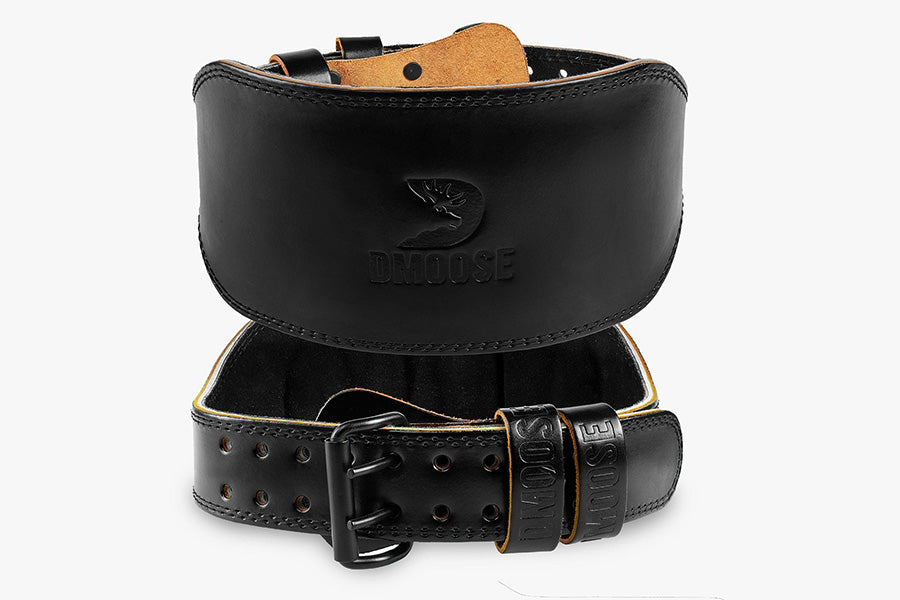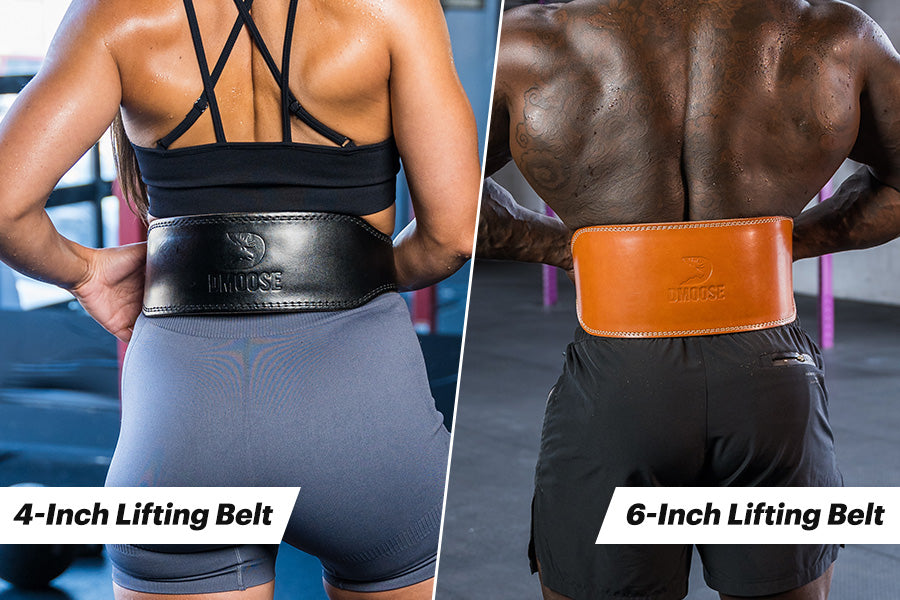In the world of fitness, a lifting belt can be your best friend when tackling heavy loads.
But here's the twist: lifting belts vary, and not all of them are the same size.
Some are 4 inches wide, while others are 6 inches wide. Which one should you choose?
Let's keep it simple.
In this blog, we'll break down the differences between these two belt sizes.
By the end, you'll have a clear picture of which belt is the better fit for your lifting goals.
Weight Lifting Belt 4 or 6 Inch?
Typically, belts maintain a uniform width from the back to the front. However, certain belts exhibit a tapering design, meaning they are wider in the back than in the front.
Belt width measures the span from the bottom edge to the top edge of the belt's rear section when it's worn.
The most commonly encountered lifting belt widths are 4 inches and 6 inches; occasionally, you might come across a different variant.
Front and back portions, for width, can be variable. For instance, a 4-inch taper belt would measure 4 inches in the back but might taper down to 2 or 3 inches in the front, and the same applies to the 6-inch belt.
Best manufacturers of fitness tools specify the dimensions for both the front and back portions for a convenient shopping experience for their customers.
Basics of a 4-Inch Weightlifting Belt:
A 4-inch belt provides a smaller surface area to brace against compared to a 6-inch belt.
This reduced surface area can be advantageous for lifters who want more mobility and less restriction during their movements.
FYI: DMooose 4-in weightlifting leather belt is best for exercises that require a greater range of motion and preparation for Olympic weightlifting. It maintains a consistent width both in the front and back.
This uniform width can provide a more balanced and even level of support across the torso.
Basic of 6 Inch Weightlifting Belt
A 6-inch belt is a type of weightlifting or powerlifting belt that measures 6 inches in width across the back support portion.
This width provides substantial support to the lower back and core while lifting heavier weights, making it a popular choice for strength training exercises.
The broader width of a 6-inch lifting belt offers a larger surface area for bracing, which can be advantageous for lifters who prioritize maximum stability and support during their lifts.
FYI: DMoose 6-inch weightlifting belt helps you increase the intensity of support while protecting you from injuries. That is why it is preferred by powerlifters and those performing heavy weight exercises like squats and deadlifts
A 6-inch lifting belt is a wider option that provides enhanced support and stability, making it suitable for lifters who engage in heavyweight lifting exercises to build muscle and strength.
Related Article: Best Weightlifting Belts for Powerlifting
4-Inch Vs 6-Inch Lifting Belts Comparison

Lifting belts are invaluable tools for strength training, providing support and stability during heavy lifts, but choosing between a 4-inch and a 6-inch belt is really crucial.
Each has its own set of characteristics that can significantly impact your lifting experience. Let's delve into the specifics:
1. Width
A 4-inch belt is narrower and provides a smaller surface area for bracing. This allows for greater mobility and flexibility during exercises, making it well-suited for those requiring a wide range of motion.
A 6-inch belt is broader, offering a larger surface area for bracing. This provides more comprehensive support and is favored by those who prioritize maximum stability and protection, especially during heavy squats and deadlifts.
Related Article: 6 Proven Benefits of Deadlifts
2. Mobility
The narrower width of a 4-inch belt allows for increased mobility, making it ideal for movements where agility is crucial, such as snatches and clean and jerks.
A 6-inch belt is advantageous for lifters who prefer a more locked-in feeling during lifts, especially when performing powerlifting exercises.
3. Range of Motion
With its smaller width, the 4-inch belt facilitates a wider range of motion in the lower back and abdomen, which is essential for certain exercises like overhead lifts.
The broader 6-inch belt limits the range of motion to some extent due to its increased width. This can be beneficial for lifters seeking stability and a reduced risk of injury.
Related Article: Why Do Lifters Wear Elbow Wraps for Safety?
5. Comfort
The narrower width of the 4-inch belt may be more comfortable for some lifters, particularly those with shorter torsos or who find wider belts cumbersome.
A 6-inch belt provides excellent support; it may feel bulkier and less comfortable for individuals with shorter torsos or those who prioritize freedom of movement.
6. Personal Preference
Ultimately, the choice between a 4-inch and a 6-inch belt often boils down to personal preference.
Some lifters simply feel more comfortable and confident with one type over the other, regardless of specific exercise or body proportions.
Top DMoose Lifting Belts for Enhanced Strength and Support
DMoose Fitness is known for producing high-quality lifting accessories, including lifting belts. They offer a variety of belt options suitable for different lifting styles and preferences.
4" Leather Weightlifting Belt

Specifically designed for fitness enthusiasts, the DMoose 4" Weightlifting Leather Belt offers optimal support during high-intensity workouts.
It is constructed from genuine leather for durability and a secure fit, suitable for various strength-training exercises.
6-Inch Weightlifting Belt

The DMoose 6-inch weightlifting belt is a versatile tool for pull-ups, weightlifting, and dips. It provides additional resistance for these exercises.
It is designed for comfort, durability, and versatility, making it a practical choice for those looking to enhance their workouts.
Related Article: What’s a Dip Belt with Chain?
FAQs
1. What is the purpose of a lifting belt?
A lifting belt is primarily designed to provide support to the lower back and core during heavy lifting exercises.
It helps stabilize the spine, reduce the risk of injury, and enhance lifting performance.
2. How do I choose the right width for my lifting belt (e.g., 4-inch or 6-inch)?
The choice of belt width depends on personal preferences and the type of exercise you perform.
A 4-inch belt offers more mobility and is suitable for exercises requiring a wide range of motion, while a 6-inch belt provides greater stability and is favored for powerlifting movements.
3. Are lifting belts suitable for beginners?
Lifting belts can be used by both beginners and experienced lifters. Beginners can benefit from the added support and protection that a belt offers, especially when learning proper lifting techniques.
4. How tight should I wear my lifting belt?
Your lifting belt should be worn snugly but not overly tight. It should allow you to brace your core effectively while still allowing for comfortable breathing.
It's essential to find the right balance to maximize support and comfort.
5. Can I wear a lifting belt for all types of exercises?
Lifting belts are commonly used for compound exercises like squats, deadlifts, and overhead presses.
They provide the most significant benefit during heavy, strenuous lifts.
However, they may not be necessary for lighter or isolation exercises where core stability is less critical.
Conclusion
Choosing a lifting belt is the sole choice of the person based on their workout goal and other stuff that we discussed in the content above.
However, before ending this discussion, we would like to give you a last tip:
When choosing fitness gear or tools, always get them from an authentic brand like DMoose, even if you have to pay a good price. Ultimately, it is cheaper than playing with the safety of your backbone.
DMoose brings you top quality gym belts and is a community of millions of satisfied customers. Scroll the store and choose the best for yourself.














